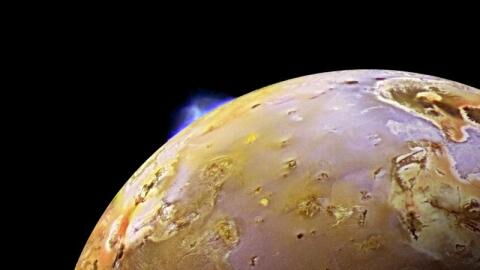You can see it with your naked eye: the moon is studded with craters caused several billion years ago by meteorite impacts. But one of them harbors a mysterious treasure, NASA astronomers announced in a recent study.
Discover our latest podcast
Under a huge crater, on the far side of our natural satellite, scientists have indeed detected a very strange mass, which spreads over 2,500 kilometers of the South Pole-Aitken basin. This is the largest impact basin on the surface of the Moon, and in the entire Solar System. And this mass is also exceptional, because of its impressive size: “Imagine taking a pile of metal five times larger than the Big Island of Hawaii and burying it underground," explained Peter James, geophysicist at Baylor University, in Texas.
A remarkably heavy mass
This mass was actually already known to scientists, but its existence had not quite been proven. During the GRAIL mission, which mapped the moon with two robots in orbit, NASA had already detected gravitational anomalies, with a higher density around the South Pole-Aitken basin. Until now, astronomers attributed this anomaly to its composition - it being iron-rich. But recent topographic data has brought this into question: this mass appears to be located 300 kilometers below the surface, and weighs about 2.18 quintillion kilograms... That's 2.18 billion trillion kilograms.
Needless to say, carrying such a mass is not without consequences for our natural satellite. According to researchers, it weighs so heavily on the South Pole-Aitken basin that it pulls the surface down 800 meters. Which explains the depression found at the bottom of the basin. One of the explanations of this extra mass is that the metal from the asteroid that formed this crater is still embedded in the moon's mantle," says Peter James.
A discovery that proves that we still have a lot to learn about our very own natural satellite, and that its far side still harbors many mysteries. These mysteries will progressively be solved, notably thanks to the Yutu2 rover, sent by China to explore the South Pole-Aitken basin.















